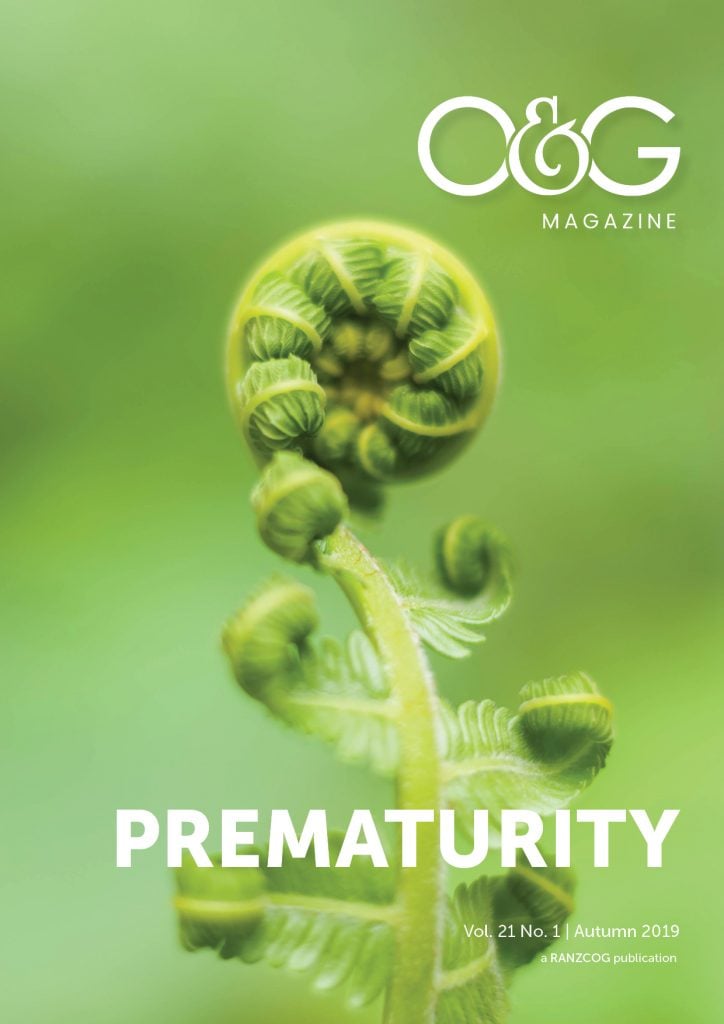Advances in neonatal care have pushed back the limits of just how premature a baby can be when we are able to successfully intervene. Currently available data suggest potential survival of infants born and resuscitated at 22 weeks gestation.1 2 Survival needs to be balanced with the potential for severe lifelong complications among those who survive and the ability of a society or unit to provide appropriate care. Thus, at the edge of viability, decision-making about whether to resuscitate an infant is difficult and fraught with both clinical and ethical challenges. Prognostic uncertainty exists and it’s therefore difficult to know what course of action is in the best interests of a particular neonate and family.
There are different definitions of periviability. In 2014, the Eunice Kennedy Shriver National Institute of Child Health and Human Development, the Society for Maternal-Fetal Medicine, the American Academy of Pediatrics, and the American College of Obstetricians and Gynecologists published an executive summary on periviable birth.3 It defined periviability as the period from 20+0 to 25+6 weeks gestation; a time where infant morbidity and mortality can vary significantly, based over a few days. More commonly, it refers to the period of time between 22 and 25 weeks. The gestational age when active resuscitation is offered varies between countries and between units within countries.
Gestational age is the most important factor in both survival and survival without neurodevelopmental impairment, but obstetricians are well aware that ascertaining an accurate gestational age is challenging and that offering active management at a specific gestation does not reflect continuous growth and maturation. In addition to increasing gestational age, factors associated with survival are female sex, 100 g increments of birthweight at a given gestational age, use of antenatal corticosteroids and singleton birth.4 4 Many other factors contribute to decision making, including counselling provided to women and their families.
Much of the literature on this topic is presented from the paediatric or neonatal perspective, with fewer reports taking into account the obstetric perspective. Obstetricians go through a complex decision-making process when faced with a woman at high risk of delivery in the periviable time period and their counselling is often influenced, not only by unit policies and changing outcome data, but also by ethical and worldview considerations. Clinicians have their own worldview, and this can influence the way information is presented to a family at high risk of periviable birth. Obstetricians and paediatricians have been demonstrated to underestimate newborn survival, as well as intact survival, with this error being greater nearer the limit of viability.5 5 Obstetricians will consider a number of factors, including whether to transfer the woman to a tertiary centre, when corticosteroids should be offered, if magnesium sulphate should be given for neuroprotection, whether the baby will be resuscitated and whether delivery by caesarean section be offered for fetal indications, being aware of the implications of a classical caesarean section on the woman’s future reproductive outcome and health.
In June 2018, the Perinatal and Maternal Mortality Review Committee (PMMRC) published a review of all neonatal deaths in New Zealand from 2007–2016.6 6 Although there was a statistically significant reduction of neonatal deaths after 35 weeks, there was no reduction in deaths from 20–24 weeks or from 25–34 weeks. Significant reductions in neonatal mortality have been reported in several countries, including Australia, the UK and Scandinavia. The 12th PMMRC report highlighted important inequities of survival in babies born alive without congenital abnormality from 23–26 weeks. Survival was statistically significantly higher for babies born in tertiary, rather than secondary, units. Babies of Maori, Pacific and Indian women, and women under 20, are more likely to be born at extremely preterm gestations, which contributes to the higher rate of deaths in these groups; however, the report also highlighted differences in access to antenatal and neonatal care. There were differences in the level of unit at delivery, in whether resuscitation was attempted and whether corticosteroids were administered.
The reasons for these differences are complex, although, clinician bias is likely to be a factor. There is a large body of work in New Zealand describing inequities in access to care, quality of care and health outcomes for Maori and Pacific people. The PMMRC also reported statistically significant differences in survival rate by tertiary units at 23–25 weeks gestation. The Australian and New Zealand Neonatal Network (ANZNN) publishes annual reports of outcomes of babies admitted to neonatal intensive care units. The PMMRC data, however, comprise all babies born alive, including those who were not resuscitated and did not reach neonatal intensive care units. The numbers of deaths are therefore larger at early gestations and reflect obstetric as well as neonatal care.
Variations in the approach to infants who are born at the borderline of viability is illustrated in Scandinavia, where there are markedly distinct approaches in Sweden, Norway and Denmark. In each country, the prevailing approaches were developed after consideration of many factors, including public sentiment, professional preferences, reported outcomes, philosophical factors and considerations of cost and cost-effectiveness. In Sweden, infants born at, or greater than, 22 weeks are routinely resuscitated if the family supports active intervention. Pregnant women are transferred to tertiary care centres and given antenatal corticosteroids and, if indicated, caesarean deliveries. In Norway, the cut off age is 23 weeks. In Denmark, it is 24 weeks. In New Zealand, the gestational age when active resuscitation is routinely offered has been 24 weeks in some units and 23 weeks in others. The transition to 23 weeks has occurred as outcomes have improved, but without public debate and without funding commitment from the Ministry of Health in terms of number of neonatal intensive care cots and staffing numbers. Resource allocation is a major factor in a unit deciding to lower the age when resuscitation and care is routinely offered. Socio-demographic variables are associated with preterm birth and the numbers of very preterm infants are higher in district health boards with higher needs populations.
Variations in practice within and between countries highlight the need for a consensus approach to management of periviable infants in each facility. There also needs to be consistent counselling that is not influenced by the clinician’s world view. The guidelines need to be based on an understanding of local outcome data and resources, as well as the relevant ethical issues. A consensus guideline has been developed in New Zealand in an attempt to standardise periviable care across New Zealand.
Discussion is necessary with the entire health team so that appropriate management and consistent advice is given to women, and their families, who are likely to experience a periviable birth. Families need enough information about their baby’s chance of survival or disability and be guided through what is a very complex decision-making process about their baby’s care. Improving the care and outcome for babies at earlier gestations requires a societal commitment and adequate resourcing, with the aim of reducing inequities of outcome by ethnicity.
References
- Ishii N, Kono Y, Yonemoto N, et al. Outcomes of infants born at 22 and 23 weeks gestation. Pediatrics. 2013;132(1):62-71.
- Wilkinson D, Hayden D. In Search of Consistency: Scandinavian Approaches to Resuscitation of Extremely Preterm Infants. Pediatrics. 2018; 142(Suppl 1):S603-6.
- Raju TN, Mercer BM, Burchfield DJ, et al. Periviable birth: executive summary of a Joint Workshop by the Eunice Kennedy Shriver National Institute of Child Health and Human Development, Society for Maternal-Fetal Medicine, American Academy of Pediatrics, and American College of Obstetricians and Gynecologists. J Perinatol. 2014;34(5):333-42.
- Tyson JE, Parikh NA, Langer J, et al. Intensive care for extreme prematurity: moving beyond gestational age. N Engl J Med. 2008;358(16):1672-81.
- Morse SB, Haywood JL, Goldenberg RL, et al. Estimation of neonatal outcome and perinatal therapy use. Pediatrics. 2000;105(5):1046-50.
- Perinatal and maternal mortality review committee. Special Topic: Neonatal Mortality 2007-2016. Twelfth Annual report of the Perinatal and Maternal Mortality review Committee. 2018;19-71.






Leave a Reply